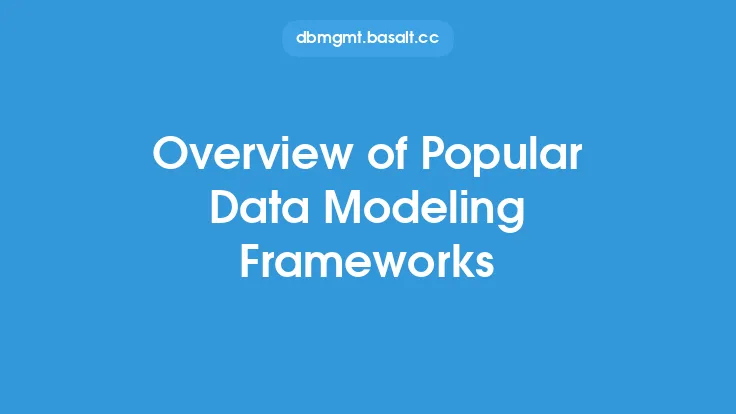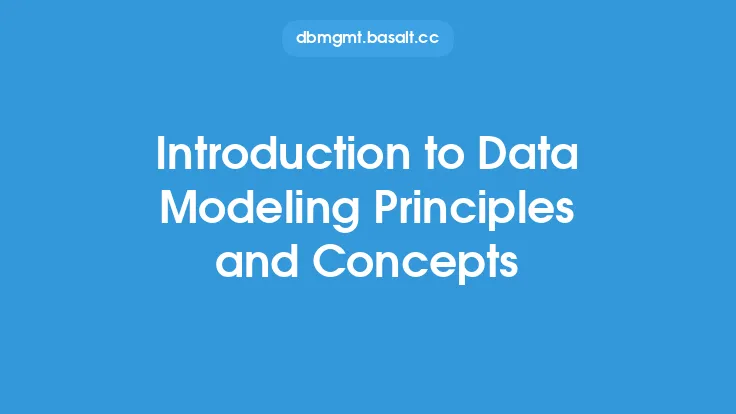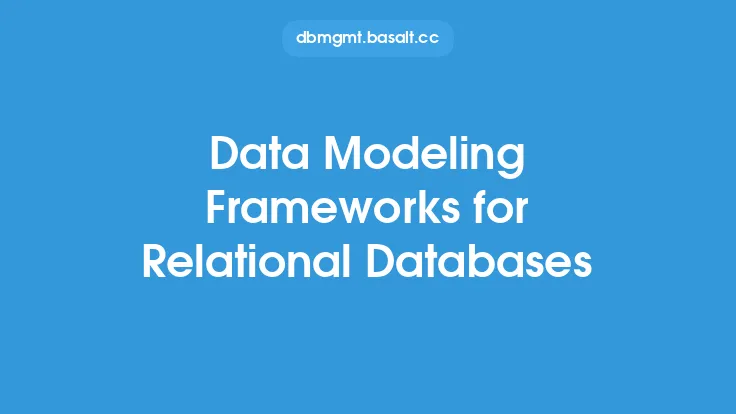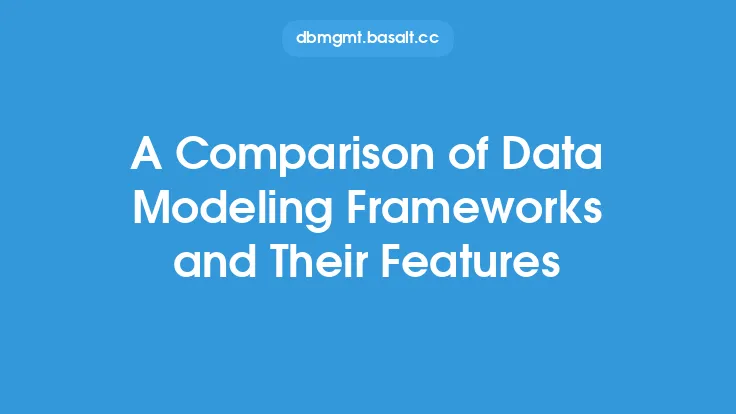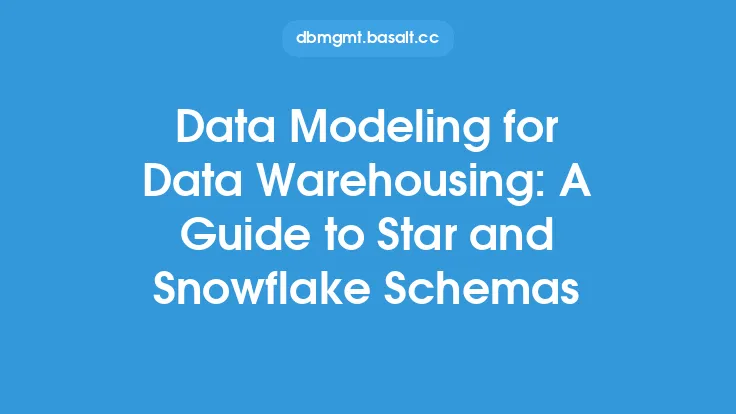Data modeling is a crucial aspect of database design, as it enables organizations to create a conceptual representation of their data assets. A data modeling framework provides a structured approach to creating, managing, and maintaining data models. It serves as a foundation for defining the relationships between different data entities, attributes, and rules that govern the data. In essence, a data modeling framework is a set of guidelines, principles, and standards that help data modelers create a robust, scalable, and maintainable data model.
What is a Data Modeling Framework?
A data modeling framework is a comprehensive structure that outlines the principles, rules, and best practices for creating a data model. It provides a common language and set of concepts that data modelers can use to communicate and collaborate with stakeholders, including business users, developers, and database administrators. A data modeling framework typically consists of several components, including a data modeling methodology, a set of data modeling tools, and a repository for storing and managing data models.
Key Components of a Data Modeling Framework
A data modeling framework typically includes several key components, including:
- Data Modeling Methodology: This refers to the approach or technique used to create a data model. Common data modeling methodologies include entity-relationship modeling, object-role modeling, and dimensional modeling.
- Data Modeling Tools: These are software applications that support the creation, management, and maintenance of data models. Examples of data modeling tools include data modeling software, such as ERwin or PowerDesigner, and database design tools, such as DBDesigner or MySQL Workbench.
- Data Model Repository: This is a centralized storage location for data models, where they can be managed, version-controlled, and shared among stakeholders.
- Metadata Management: This refers to the process of managing metadata, which is data that describes the data model, such as data element definitions, relationships, and business rules.
Benefits of Using a Data Modeling Framework
Using a data modeling framework offers several benefits, including:
- Improved Data Consistency: A data modeling framework helps ensure that data models are consistent and accurate, which reduces errors and inconsistencies in the data.
- Increased Data Integrity: A data modeling framework provides a structured approach to defining data relationships and business rules, which helps maintain data integrity and reduces data redundancy.
- Enhanced Collaboration: A data modeling framework provides a common language and set of concepts that stakeholders can use to communicate and collaborate, which improves collaboration and reduces misunderstandings.
- Better Data Governance: A data modeling framework provides a foundation for data governance, which includes data quality, data security, and data compliance.
Data Modeling Frameworks and Database Design
A data modeling framework plays a critical role in database design, as it provides a foundation for creating a physical database design. The data model serves as a blueprint for the database, outlining the structure, relationships, and constraints of the data. A well-designed data model ensures that the database is scalable, flexible, and maintainable, which reduces the risk of data errors, inconsistencies, and performance issues.
Best Practices for Implementing a Data Modeling Framework
To implement a data modeling framework effectively, organizations should follow several best practices, including:
- Establish a Data Modeling Methodology: Choose a data modeling methodology that aligns with the organization's goals and objectives.
- Select the Right Data Modeling Tools: Choose data modeling tools that support the chosen methodology and meet the needs of the organization.
- Develop a Data Model Repository: Create a centralized repository for storing and managing data models.
- Establish Metadata Management Processes: Develop processes for managing metadata, including data element definitions, relationships, and business rules.
- Provide Training and Support: Provide training and support for data modelers and stakeholders to ensure that they understand the data modeling framework and can use it effectively.
Common Challenges and Limitations
Implementing a data modeling framework can be challenging, and organizations may encounter several limitations, including:
- Resistance to Change: Stakeholders may resist changes to the data modeling process, which can make it difficult to implement a new framework.
- Lack of Skills and Knowledge: Data modelers and stakeholders may require training and support to understand the data modeling framework and use it effectively.
- Inadequate Tools and Resources: Organizations may not have the necessary tools and resources to support the data modeling framework, which can limit its effectiveness.
- Data Quality Issues: Poor data quality can limit the effectiveness of the data modeling framework, which can make it difficult to create accurate and consistent data models.
Conclusion
A data modeling framework is a critical component of database design, as it provides a structured approach to creating, managing, and maintaining data models. By understanding the key components, benefits, and best practices for implementing a data modeling framework, organizations can create a robust, scalable, and maintainable data model that supports their business goals and objectives. While implementing a data modeling framework can be challenging, the benefits of improved data consistency, increased data integrity, and enhanced collaboration make it a worthwhile investment for organizations that rely on data to drive their business decisions.

